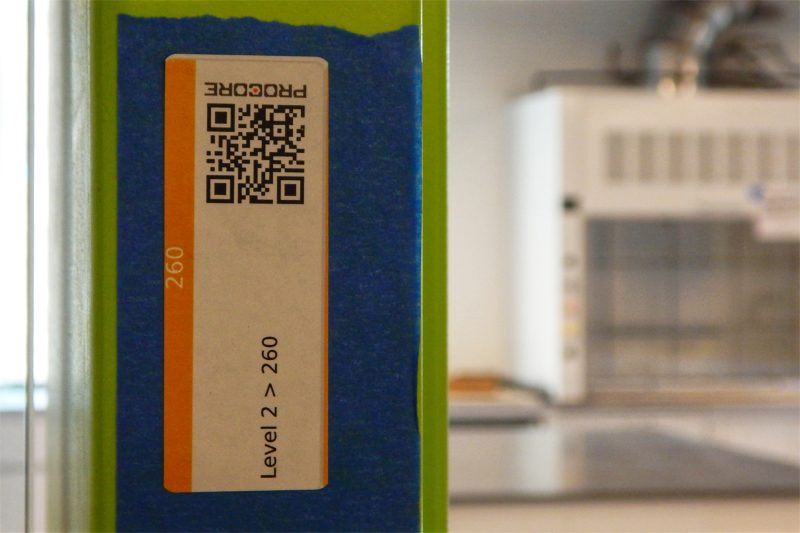Three Ways to Improve Efficiency of Student Housing Turnover
Delivering a project on time is always one of the top goals for a given project, but in student housing there is no other option than to deliver on time! Through Juneau’s extensive experience in completing more than 16,000 beds, we have identified several key strategies to improve the efficiency of the most crucial part of student housing construction – the final turnover. Heightened teamwork and execution is necessary to accomplish this goal with today’s market challenges, here’s how we do it:
CLEAR, FREQUENT AND OPEN COMMUNICATION
In order to keep the project on schedule, it is critical that all project stakeholders clearly understand their roles and responsibilities from day one. Establishing open lines of communication among all OAC members early on helps with quick decision making on time sensitive items that could impact the schedule down the line. In today’s climate of excessively longer and changing material lead times and pricing volatility, failing to make timely decisions can lead to unexpected price escalations, budget overruns, schedule delays or resequencing. It is our job to have an acute awareness of the current market conditions and provide a comprehensive procurement schedule to clearly identify critical approval and release deadlines. Early OAC buy-in and rigid adherence to the procurement schedule is paramount to maintaining control of the GMP.
Understanding that all owner and scope allowances cannot be eliminated prior to GMP, it is important to collectively agree during the preconstruction phase, to proceed with the goal of reducing allowances and undefined scope as much as possible. This can tremendously reduce the risk of unforeseen escalations later in the project and allow for more competitive pricing during the GMP bidding process. Once construction is underway, it is essential that all OAC team members are in constant communication regarding material procurement challenges and supply chain issues in today’s market. These must be communicated immediately when challenges arise to quickly identify alternative options with input from the OAC team and trade partners. To keep construction moving, it is important to get these alternative options approved quickly. If resequencing work is required to accommodate these changes, it is key to ensure all trade partners contribute and buy in to the new plan.
SYSTEMS COORDINATION
Life safety system commissioning and inspections are of the utmost importance to successfully implementing phased unit turnover and early FFE move-ins within student housing construction. Our teams work closely with municipalities to clearly understand all inspection requirements from the beginning and communicate those requirements back to the OAC team and confirm the program supports a strong finish. We ensure these inspections are scheduled and completed in an expedient fashion to push the schedule forward and take advantage of early and phased FFE move-ins whenever municipalities allow it.
We utilize BIM and develop a fully populated coordination model during preconstruction and throughout the construction of each project. Constructing the building in the digital space first allows for our construction team to verify design intent against building MEP systems and other features that may not be fully developed within the drawings. Major conflicts can be identified and addressed with the OAC team early, which reduces cost and inefficiency in the field. Eliminating schedule disruptions due to coordination issues is critical to successfully turning over our student housing projects. We must eliminate unknowns, especially in those areas we can control.
EFFICIENT UNIT TURNOVERS
Successful turnover of a large volume of units requires that quality control (QC) standards and expectations are established with all trade partners before ever stepping foot on the jobsite. This ensures that trade partners have been informed of and bought into the project-specific QC plan in addition to all schedule durations so that quality work is completed on-time. As work is progressing in the field, the Juneau team will “punch as we go” with up-to-date QC audits and observations so that timely adjustments and corrections can be made rather than inefficiently compiling and pushing all punch list items to the end. These requirements are regularly communicated to trade partners during Pre-Install Meetings, Daily Morning Huddles, Near-Term scheduling, and more so that everyone is working towards the same goal.
Once the scopes are complete in a defined area, the Juneau team completes its punch list prior to the owner beginning their own punch process to help with efficiency of unit turnover. A phased punch process allows for early next steps in units or common areas to capitalize on any time gained.
The use of technology improves the efficiency and organization of the punch process which is crucial in multi-unit construction. By assigning QR codes to individual units, the Juneau team can easily track and confirm punch-list progress through Procore since all trade partners are updating the master punch list in real time. Additionally, this is regularly shared with Owner teams to keep them up to date on punch progress so they can manage their FFE installation schedule accordingly. The goal is ensuring quality work is put in place within schedule durations to minimize punch list items and turn over units efficiently.

Assigning a Procore QR code to each individual unit allows the Juneau team to easily track the punch-list progress.
Planning helps minimize issues during construction which ultimately prevents schedule erosion that can have a critical impact on turnover. Ensuring that clear communication is established from day one and is maintained through the duration of the project, building systems are coordinated before construction begins, and QC standards are understood through completion of every scope are essential to turning over a student housing project on time.
Back to All Insights